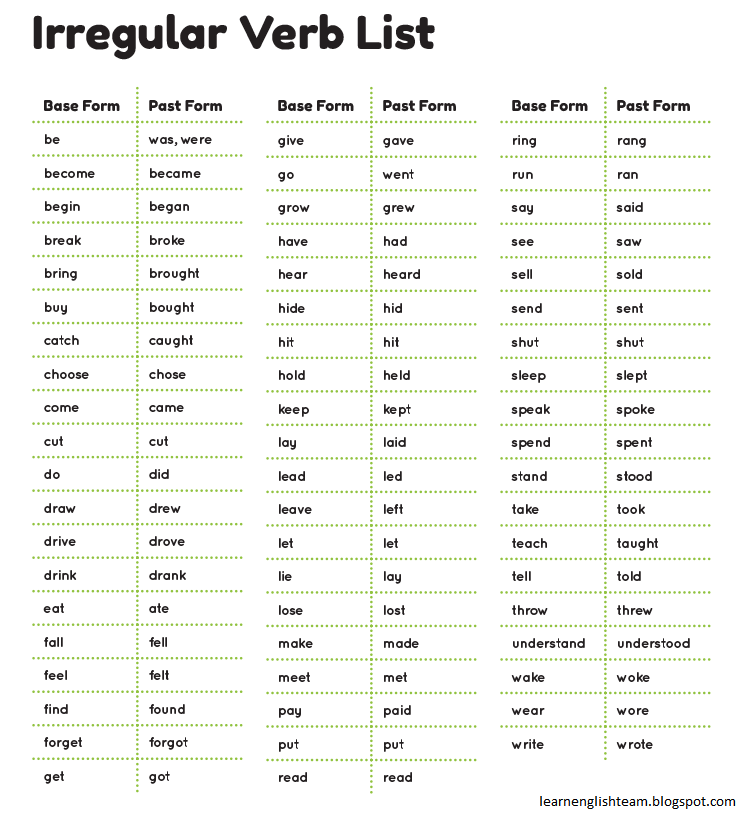Forms Of Be Verb List
What is the three form of verb 'be' Jan 30 2010 14:06:00. Anonymous; 1 2. Hi Anon There are more than three forms: be = the base or infinitive form was/were = the two forms that we use for the simple past tense been = the past participle being = the present participle. Are you looking for a list of all the ways in which the verb to be can be conjugated? Maybe this will help: Conjugate 'to be' - English conjugation. Here are the forms of to be: am, is, are, was, were, be, being, been. Good to know: To be can be used as a main verb (example: am in I am sincere).
The verb 'to be' is one of the most common verbs in the English language. It has many different forms. The forms of the verb 'to be' When? Form Example Base form be It can be simple. Simple Present I am I am here.
You are You are here. He/She/It is She is here. We are We are here. They are They are here. Simple Past I was I was here. You were You were here.
He/She/It was She was here. We were We were here. They were They were here. Simple Future I will be I will be here. You will be You will be here.
He/She/It will be She will be here. We will be We will be here.
They will be They will be here. Progressive form being He is being unusual. Perfect from been It has been fun. The verb 'to be' also has many different meanings. The following are the most important ones.
The meanings of the verb 'to be' 1. She is beautiful. It is stinky. This is dangerous. The verb 'to be' as an auxiliary verb (helping verb) Auxiliary verbs are verbs that are used together with the main verb of the sentence to express the action or state. Main verb + auxiliary verb = complete idea The verb 'to be' can be used as an auxiliary verb to express ongoing (continuing) actions.
For example: Anna is eating a sandwich. 'Eating' = the main verb. 'Is' = an auxiliary (helping) verb. 'is eating' (a complete idea) = the eating is IN PROGRESS.

Forms Of To Be
More examples: Kayla is walking home with her friends. Justin and Ethan are watching a movie. I am trying to get some sleep. The verb 'to be' in passive sentences The verb 'to be' is used together with the third form of the verb (V3) in passive sentences. For example: ACTIVE: I eat an apple. PASSIVE: The apple is eaten.
'Eaten' = the main verb (in the third form – V3). 'Is' = an auxiliary (helping) verb. 'is eaten' (a complete idea) = the subject of the sentence (the apple) is affected by the action.
More examples: People buy cars. Cars are bought. Someone turned on the light. The light was turned on. He will clean the house. The house will be cleaned. Progressive Forms of the verb 'to be' The progressive form of the verb 'to be' is 'being.'
This means the action is ongoing (continuing). Examples: The little boy is being naughty. She was being rude, but then she apologized. They are being tricked. Perfect Forms of the verb 'to be' The perfect form of the verb 'to be' is 'been.' This means the action is complete (finished).
What Are The 8 Forms Of Be Verb
Examples: The little boy has been naughty. She has been rude, but now she apologizes. They have been tricked. Grammar Exercises.